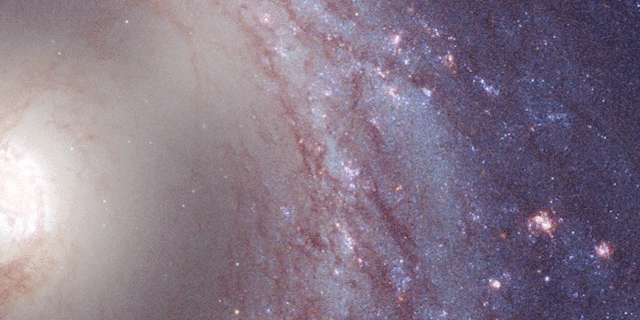Hubble Expands Skywatching List for Messier Marathoners with New Photos
Amateur astronomers had 12 spectacular new images to look to during this year's Messier marathon, a skywatching challenge that happened on the weekend of March 17 and 18.
Messier Marathons happen in early spring every year and are usually planned around a new moon, when it's possible to observe all 110 sky features — called Messier objects — in a single night. It requires stargazers to set up their telescopes at sundown one day and find as many of the Messier galaxies, star clusters and nebulas as possible before the sun rises the next morning. [Messier Objects: Hubble Telescope's Stunning Views]
The Hubble Space Telescope has now provided views of even more Messier objects, working to complete its own Messier marathon of sorts. Its newest images include objects like M58, one of the first galaxies recognized to have a spiral shape; M108, also known as the Surfboard galaxy; and M75, a centrally concentrated globular cluster. The images were added as astronomers in the Northern Hemisphere geared up for a nightlong exploration of the cosmos.

French astronomer Charles Messier started his catalog in the 1750s as a way to help other astronomers avoid mistaking stationary objects like galaxies and nebulas for comets. He found the first Messier object, M1 (also known as the Crab Nebula), in 1758 while attempting to find a comet during his time as chief astronomer of the Marine Observatory in Paris, according to NASA. By the time of his death in 1817, Messier had added 103 galaxies, star clusters and nebulas to his Catalog of Nebulae and Star Clusters. In the 20th century, the catalog was revised to include seven more.
Although Messier may have created his catalog to help other astronomers avoid distractions in their hunt for comets, he compiled a list of some of the most fascinating celestial objects — including the 12 Hubble recently added to its Messier database. As of February 2018, Hubble had observed 93 of the 110 Messier objects, according to NASA.
The images compiled by Hubble don't always show the galaxy, nebula or star cluster in its entirety, because Hubble has a relatively small field of view. But the portions of the objects it has imaged offer astronomers a more detailed look at the objects they observe with their telescope or naked eye. The 12 new images include six spiral galaxies, four elliptical galaxies and two globular clusters, according to a NASA video.
Although this year's official Messier Marathon happened around the March 17 new moon, it's still possible to observe Messier objects through early April.
Get the Space.com Newsletter
Breaking space news, the latest updates on rocket launches, skywatching events and more!
Follow Kasandra Brabaw on Twitter @KassieBrabaw. Follow us @Spacedotcom, Facebook and Google+. Original article on Space.com.
Join our Space Forums to keep talking space on the latest missions, night sky and more! And if you have a news tip, correction or comment, let us know at: community@space.com.

Kasandra Brabaw is a freelance science writer who covers space, health, and psychology. She's been writing for Space.com since 2014, covering NASA events, sci-fi entertainment, and space news. In addition to Space.com, Kasandra has written for Prevention, Women's Health, SELF, and other health publications. She has also worked with academics to edit books written for popular audiences.









